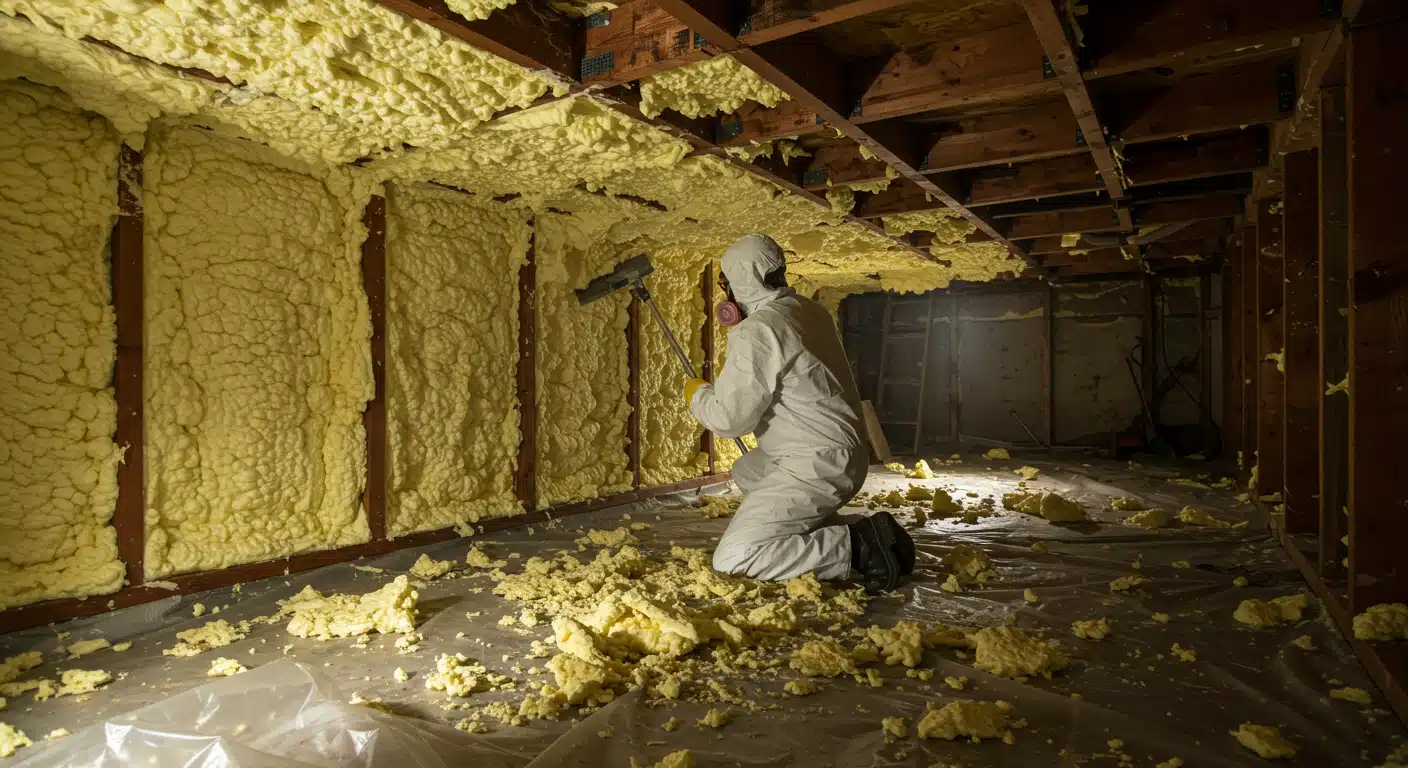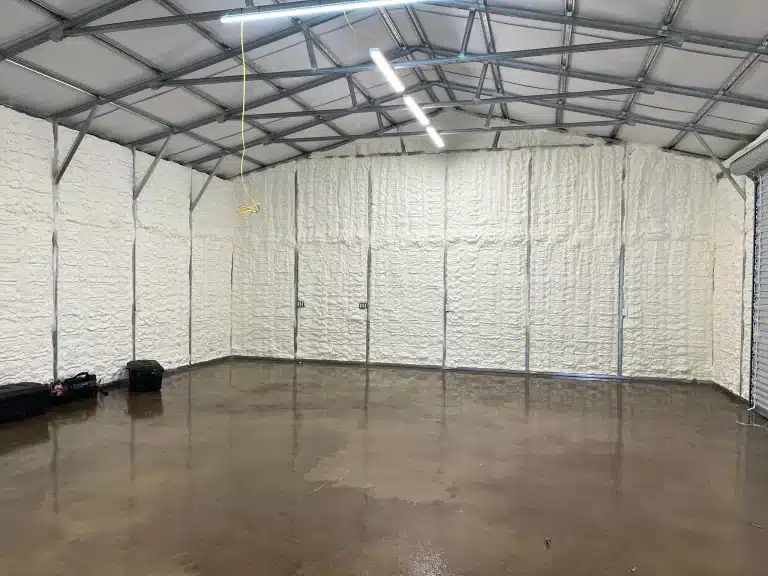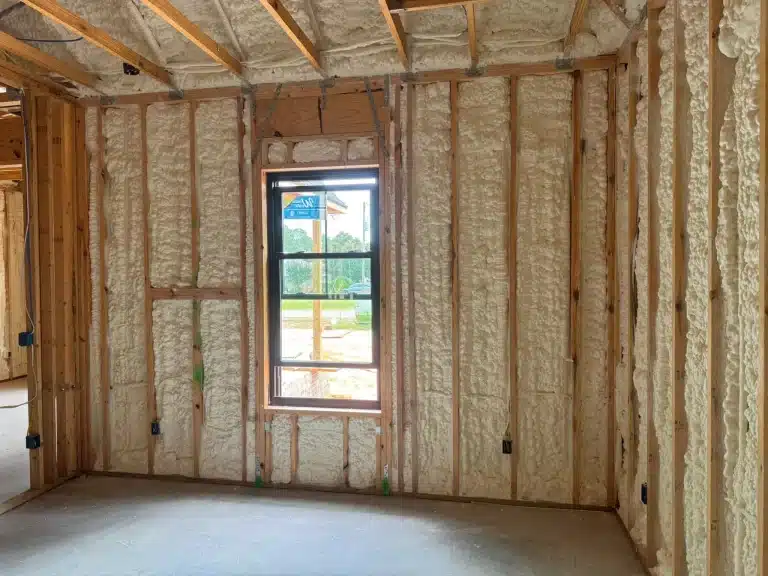If you’ve ever caught a whiff of musty air in your attic, seen a spike in your energy bill, or noticed strange drafts even with your windows closed, you’re not imagining things. At Prestige Insulation Solutions, we’ve helped countless homeowners identify one overlooked culprit: aging, deteriorated insulation. It’s not just inefficient; it can be harmful.
Old insulation doesn’t just stop doing its job. It can introduce air quality issues, pest infestations, and even health risks. In this guide, we’ll walk you through exactly why outdated insulation is more than a nuisance and what to look for if it’s time to act fast. With our deep experience and specialized insulation removal services, we’re here to help protect your home, health, and comfort.
By the time you finish reading, you’ll know the warning signs, understand the risks, and be equipped with the knowledge to make confident decisions supported by our expert team.
The Hidden Dangers Lurking in Old Insulation
As insulation breaks down, it loses more than thermal resistance. It can create ideal environments for mold, rodent nests, and airborne irritants all while silently pushing your HVAC system to work overtime.
At Prestige Insulation Solutions, we regularly see homeowners surprised by what lies beneath the surface. What looks like a layer of fiberglass may be harboring moisture, bacteria, or degraded materials that circulate through your air system.
Contaminants and Air Quality Hazards
Old insulation can absorb decades of dust, pollen, rodent droppings, and even chemicals from previous construction. These contaminants don’t just stay trapped they can migrate into your home’s living areas.
We’ve worked with clients who were experiencing unexplained allergies or respiratory discomfort, only to find that the attic insulation was disintegrating and infested with mold. In many homes, this is a ticking time bomb for air quality.
Structural Moisture and Mold Growth
Deteriorating insulation allows moisture to settle into wood and drywall. This creates ideal conditions for mold, which not only smells but spreads aggressively and compromises structural integrity. One homeowner we assisted had soft ceiling spots due to wet insulation that had been there for years—unseen but steadily damaging the home.
Our team safely removed the contaminated insulation, sanitized the area, and replaced it with high-performance, moisture-resistant alternatives restoring safety and comfort quickly.
Warning Signs Your Insulation Needs to Go Now
Knowing what to look for is half the battle. We’ve compiled the most critical red flags that signal your insulation is no longer doing its job and may be putting your home at risk.
Increased Energy Bills Without a Clear Cause
If your heating or cooling bills are climbing and your HVAC system isn’t to blame, your insulation might be. As materials degrade, they lose their ability to regulate indoor temperature, causing systems to run longer and harder.
In one Pensacola-area home, we helped reduce utility costs by over 30% just by removing and replacing their 25-year-old attic insulation.
Odd Smells or Allergy Flare-Ups
Persistent musty odors, sneezing, and dry throats indoors could point to more than seasonal allergies. Contaminated insulation affects indoor air and introduces particles that irritate the lungs and sinuses.
We often find that families with recurring health issues experience significant relief after insulation removal and replacement.
Signs of Rodents or Insects
Rodents love nesting in old, warm insulation, especially fiberglass and cellulose. You may see droppings, chewed material, or hear scratching in the walls. Bugs are another issue, especially in humid climates like Florida’s.
We safely remove insulation that’s been compromised by pests, seal entry points, and install pest-resistant insulation that helps protect your home moving forward.
Outdated Materials Pose Unique Risks
Not all insulation is created equal, and many older homes still contain materials that are no longer considered safe or effective.
Asbestos and Vermiculite: A Risk Not Worth Taking
Some insulation types, like vermiculite, may contain asbestos. These materials should never be disturbed without proper safety measures. Our team is trained in safe, compliant removal and works closely with certified labs when testing is necessary.
We always recommend a professional inspection if your home was built before 1990 and the insulation hasn’t been updated.
Settling and Gaps in Blown-In Insulation
Over time, blown-in insulation settles, leaving gaps that let heat escape or enter. This means your system is constantly compensating, and the longer it’s ignored, the more strain your home takes on.
We evaluate attic depth and coverage as part of our inspection service, giving you a clear picture of where energy is being lost.
Professional Removal Makes a Real Difference
It’s tempting to patch up insulation problems yourself. But removal, especially in contaminated or deteriorated spaces, isn’t a DIY job. It requires proper equipment, training, and disposal methods.
Safe, Thorough Extraction Without the Mess
We use negative air pressure systems and sealed vacuums to prevent debris and particles from spreading into your home. Every step of our removal process is designed to minimize risk and maximize cleanliness.
Clients often comment on how quickly and efficiently we’re able to complete even large attic removals usually in one day.
Preparing for a Fresh, Energy-Efficient Start
Once removal is complete, we inspect for leaks, structural damage, or ventilation issues that may have contributed to insulation failure. Then, we guide you through options for replacement always based on your goals, budget, and home layout.
The result is a cleaner, healthier, and more efficient living environment backed by professional craftsmanship.
Ready to Protect Your Home with prestige insulation solutions?
If your home shows any signs discussed here, don’t wait for conditions to worsen. We’re here to make insulation removal safe, fast, and hassle-free. Our experience, care, and commitment ensure your home stays efficient, clean, and protected year-round.
Call us at (850) 429-4969, email [email protected], or schedule a visit today. Let’s make your home healthier and more efficient—starting now.
Have More Questions? We’ve Got Answers
How do I know if my insulation is contaminated?
Common signs include musty smells, visible mold, rodent droppings, and rising energy bills. We offer inspections to assess these issues.
Can I remove old insulation myself?
We don’t recommend it. Without the proper equipment, you risk spreading contaminants. Our team ensures safe, thorough removal and disposal.
What kind of insulation is best for replacing old material?
That depends on your space, needs, and climate. We’ll help you compare blown-in fiberglass, spray foam, and other options.
How long does insulation removal usually take?
Most residential jobs take less than a day. Larger homes or severe contamination can take a bit longer, but we work efficiently.
Does old insulation affect indoor air quality?
Yes—especially if it’s damp, moldy, or rodent-infested. Removing it helps restore cleaner, healthier air in your home.
How much does professional insulation removal cost?
Costs vary based on square footage and condition. We provide free, no-obligation quotes after inspection.
Is insulation removal messy?
Not with us. We use sealed vacuum systems and protective barriers to keep your home clean from start to finish.
Can you tell if I need removal without going into the attic?
We can often identify issues through thermal imaging and airflow testing. A quick visit can reveal a lot.
What should I do if I suspect asbestos in my insulation?
Call us before disturbing it. We’ll coordinate safe testing and removal if necessary.
What’s the benefit of replacing old insulation right away?
Improved comfort, lower energy costs, better air quality, and a healthier home—starting from day one.






